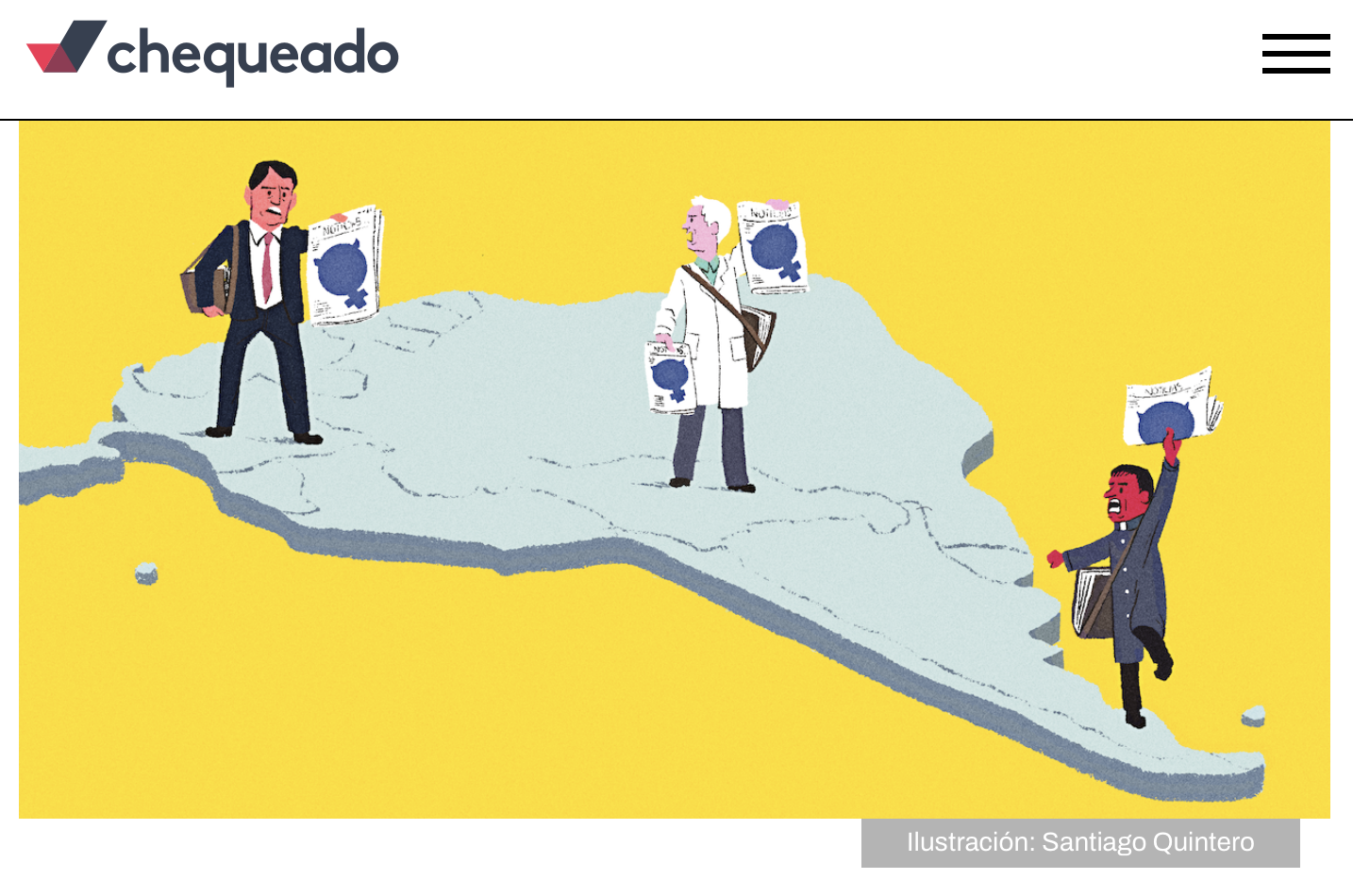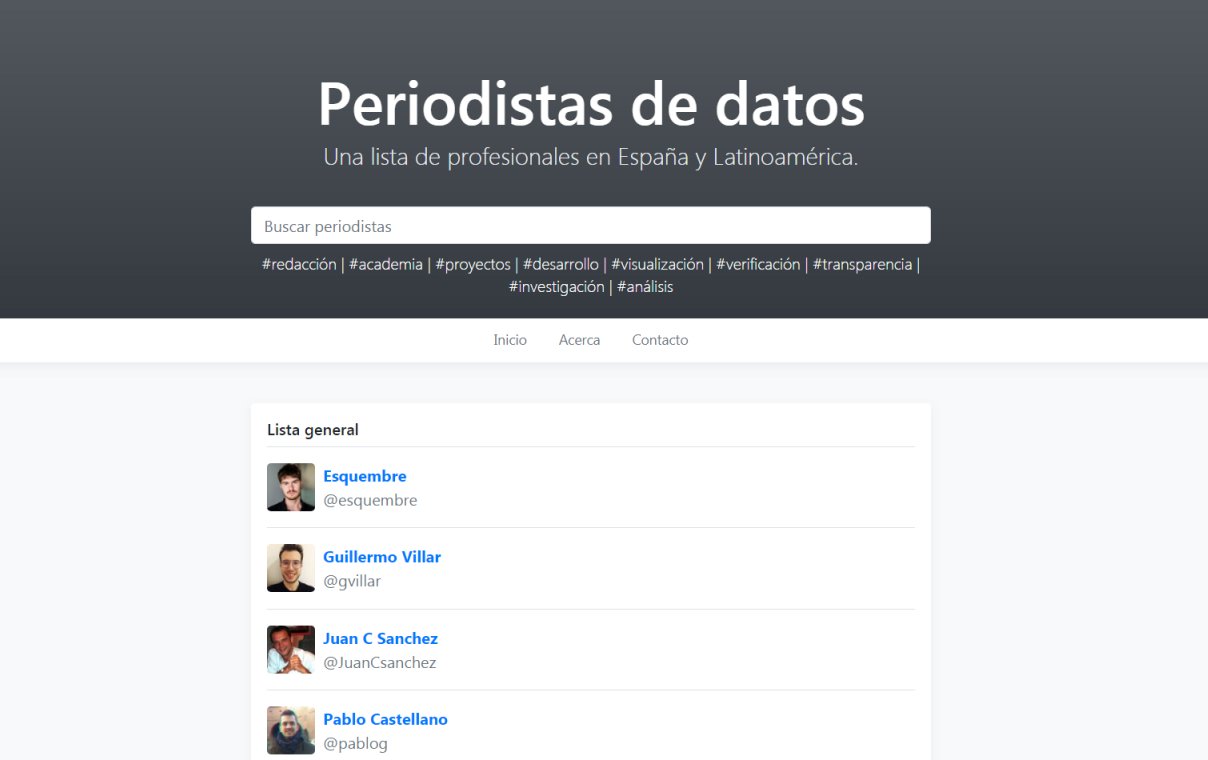Data journalism in Spanish-speaking countries is mainly practiced by journalists who are new to the discipline, have no formal academic education in data, have learned as they go, and are mainly self-taught.
This is one of the main conclusions of a new academic study that sought to analyze the training, routines, working conditions and technology used by data journalists in Spain and Latin America.
"The data journalist network. Profiles, skills, routines and tools of professionals in Spain and Latin America" was published in October 2023 in the journal Observatorio (OBS*) and produced by researchers at the Department of Social and Human Sciences at Miguel Hernández University, in Elche, Spain. It was written under the leadership of Félix Arias, deputy director of the Master in Innovation in Journalism of that institution, with co-author Miguel Carvajal, director of the same postgraduate program.

Félix Arias, a professor at the Miguel Hernández University in Elche, Spain, is the author of the research, co-authored by professor Miguel Carvajal. (Photos: Twitter)
Researchers aim for the study to be the first brick in building a network of journalists and other data professionals that will serve to strengthen ties and collaboration among data journalists in Spanish-speaking countries.
"It was an opportunity to gather everything that is being done in data journalism in Spanish. It was very interesting to try to build bridges," Arias told LatAm Journalism Review (LJR)."There are times when in Spain we err on the side of looking at what is being done in the United States or Northern Europe. And I think that, for example, in countries like Argentina [...], Cuba or Peru there are examples of data journalism of the highest level. So we thought we had to try to bring all that together, using the Spanish language as a starting point and reaching far as possible."
The project began in 2018, with the construction of an open web directory that called for data journalism professionals in Spain and Latin America to register and share basic personal and professional information. Then, between 2019 and 2020, the authors distributed a survey among the registered journalists that had questions focused on describing their professional characteristics in more detail. A total of 206 data journalists responded to the survey.
The research findings most highlighted by the authors had to do with the training of data journalists. Nearly 75% of respondents have a university education in journalism or other branches of communication, while more technical disciplines such as engineering or statistics are present in much lower percentages.
More than 65% have a graduate degree. However, the vast majority of these graduate degrees (72%) are in areas of journalism or communication. Only 6.5% of professionals with graduate degrees have master's or doctoral degrees related to data or investigative journalism. Just over 2% have graduate degrees in data science and 3.9% in data visualization.
"I thought there might be more engineers or more statisticians, but that was not the case. I found surprising the fact that, even though it’s a more technical branch, there are a lot of journalists," Arias said. “And then, they don't have specialized training in data journalism. But even those who have master's degrees or PhDs have a more generic specialization and have had to find their own way by training themselves in data journalism.”
One multiple-choice question in the study yielded that about 62% of data journalists surveyed consider themselves experts in data analysis and processing, while 55% feel they have mastered investigation as a method of data collection. Just over 52% consider themselves proficient in data visualization. In contrast, only 16% chose programming as a discipline they have mastered.
Olivia Sohr, director of impact and new initiatives at fact checking organization Chequeado in Argentina, said the outlet's newsroom reflects the study's findings in terms of training of its data professionals. Chequeado employees who work with data are professionals in journalism, communications or other social sciences, and have been trained in data topics once within the organization. Only one team member joined Chequeado with prior experience in data journalism, Sohr said.
Although the outlet has engineers and programmers, they do not work directly on data journalism issues, although they do collaborate in journalistic projects that require their expertise.
"There is not much [university] training in data journalism in Argentina," Sohr told LJR. "We, for example, offer a course in a master's program in data journalism and there are other media, for example La Nación Data, that give courses in some master's programs, but it’s not something that is very widespread in the curriculum of journalists in general."
The results of "The data journalist network" show the youth of data journalism in Spanish-speaking countries. More than 75% of respondents have less than five years of experience in the field, while about one-third have one to two years of experience in data journalism.
There are now a variety of tech tools for data collection, processing, analysis, and visualization, and more and more newsrooms are turning to programming languages for data projects. Nevertheless, for journalists in Spanish-speaking countries, spreadsheets are their most used tool.
"There is still a great predominance of Excel and not much programming. For example, I thought that already in this sample universe of data journalists more people would know how to handle [computational languages such as] R, Python, etcetera," Carvajal told LJR. “It seems to me there are a few who do within this same sample, which is supposed to be people with a high mastery [of data journalism].”
Excel and similar applications such as Google Sheets were mentioned by more than 40% of respondents as their most used tool. Far behind is the data analysis and visualization platform Tableau, with 15%. Flourish also appears in the results, with 12.1%, as does Datawrapper, with 7.3%.

Chequeado's data journalists are professionals in journalism, communication and other social sciences who have been trained in data once working at the media outlet. (Photo: Screenshot)
R was mentioned by 13.1% of respondents as their most used tool, while Python received 8.7%.
"We tend to think about much more complex and advanced stuff, but for 95% of data journalism jobs, Excel is enough for us. Properly applied, for a journalist it adds a lot," Arias said. “The scale is tipping more towards Google Sheets, it seems to me. It offers practically the same thing minus some specific functions, but it’s more versatile and you can work better as a team.”
Preference for spreadsheets coincides with a perception of having mastered data analysis and collection compared to other stages of the data journalism process, as revealed in the study. According to Arias, the most important thing in data journalism is precisely the processing of information, as opposed to visualization and presentation.
"That final phase of the publication, in 90% of the cases, is usually secondary. In the end, the most important thing is the work behind it, the data processing that is going to make us discover exclusive information, discover good stories," he said. "In the end, the process is almost more important than the end result, which can be a visualization on Flourish, a thread on Twitter, or a simple infographic on TikTok."
For Sohr, good presentation of data journalism work has more to do with making information transparent and accessible to readers than with complex and sophisticated visualization.
She said that Chequeado is working on developing products that offer better accessibility to data, not only technically, but making it easier for users to browse and understand, so it answers questions people are asking about current issues in Argentina.
"The philosophy of data journalism is very close to Chequeado's philosophy during the whole process: we use a method, we are transparent about where information comes from, we open up the data we use and we clean up the sources we use so that anyone can look them up," she said. "We would love to create databases that are searchable in other ways by users. In other words, to be able to open up the information more, in a more user-friendly packaging."
The researchers also found that more than half of the data journalism professionals in Spanish-speaking countries that were surveyed are staff media employees. Only 26% of respondents said they work independently and 16% said they have started their own data journalism company.
"I think the number of people who are dedicated to data journalism on a full-time, contract-basis will be constant. But at the same time, I think that part-time professionals in other fields will continue to grow, but they'll have to dedicate part of their time to working with data," Arias said. “Before, a story meant a source had trusted you with a secret while in a parking lot. Now, surely, all that information is at our fingertips and all we have to do is to be able to shape it.”
The authors of the research paper agree that the eruption and growth of data journalism, both in Spain and Latin America, has taken place mainly in independent journalism outlets, although there are specific examples of traditional media that have created data units that have become references in the discipline, such as La Nación Data, of the newspaper La Nación, in Argentina, and the Data Unit of newspaper El Tiempo, in Colombia.
"It’s in the DNA of data journalism in general for it to be born in the margins of the traditional industry, because it’s a narrative using innovative formats. And, as often happens, with two or three exceptions in each major market, the most innovative initiatives are born outside the media," Carvajal said. “Data journalism as a discipline is much stronger outside the media, in entrepreneurial projects, than in traditional media.”
When rating their employment status, data journalists surveyed gave responses of approval on a scale of 1 to 10. More than 57% rated their status as 7 or higher. The rating takes into account aspects such as pay for their work and their level of job satisfaction.

The research authors are developing a website that will serve as a directory of Spanish-speaking data journalists, with interviews and information about the profession in the region. (Photo: Courtesy of Miguel Carvajal)
As for the general level of data journalism in Spanish-speaking countries compared to other regions, the authors of the study believe it’s only behind Anglo-Saxon and Scandinavian countries. However, Arias said, the region faces particular challenges that hinder the development of data journalism, such as a lack of transparency and access to information in some countries.
"There’s a key issue in regimes that are not 100% democratic, which is that it’s always much more difficult to do data journalism. There, that level of transparency we need is far below," he said. “However, I think that, if we divide [the level of development by region] into three or four levels, we are in second place and I think that’s not bad.”
For Arias, one area of opportunity to raise the level of data journalism in Spanish-speaking countries lies in the idea that data units in media outlets disappear and data journalism expands to the entire newsroom, with data journalists distributed across all teams. In addition, he said, data journalism is not yet fully consolidated at the level of local journalism.
"In Anglo-Saxon countries there are already small newsrooms of 10 or 15 people where there is a data team of two or three people. They are realizing that data journalism is not just those final maps or graphs, but can often translate into a front page of a newspaper, or a news story that opens a newscast," he said. “In the end, data journalism is like the foundation that can help us find different stories that help us set ourselves apart.”
Arias said they will seek to work on an update of "The data journalist network" in 2024 to assess the impact of the COVID-19 pandemic on data journalism. In the meantime, the research authors are working on converting the web directory the project began with into a digital platform that brings together and makes visible the profiles of hundreds of data journalists from Spanish-speaking countries and encourages collaboration among them.
Currently, the Department of Social and Human Sciences at Miguel Hernández University is in the process of interviewing dozens of professionals in order to add a layer of qualitative information to the situation of data journalism in Spanish-speaking countries. So far, the directory has data from more than 350 data journalists and the authors expect to have at least 100 interviews published by the end of 2023.